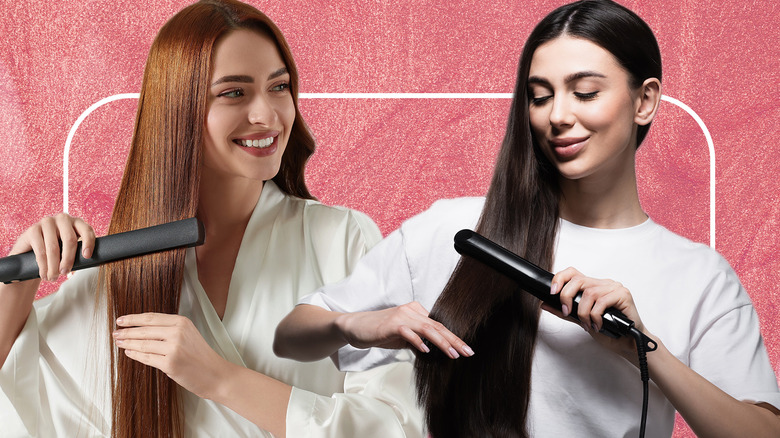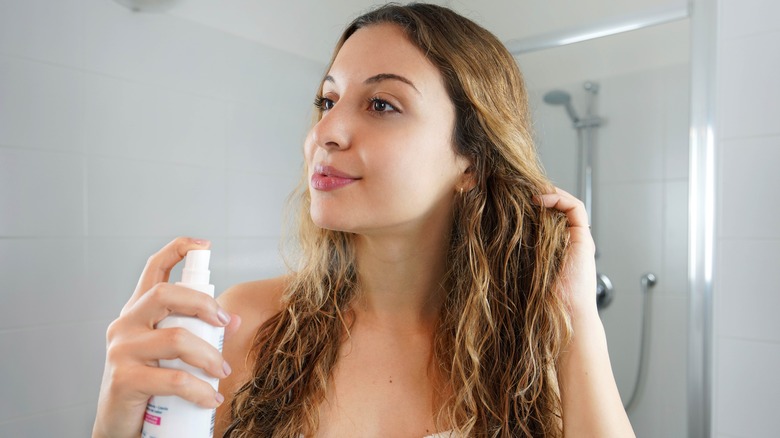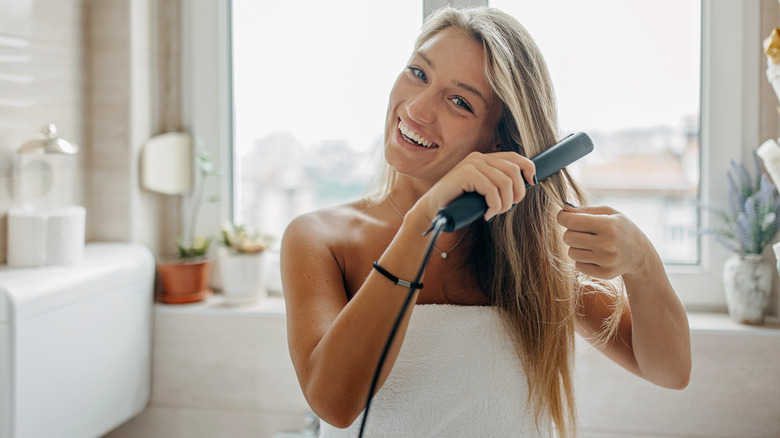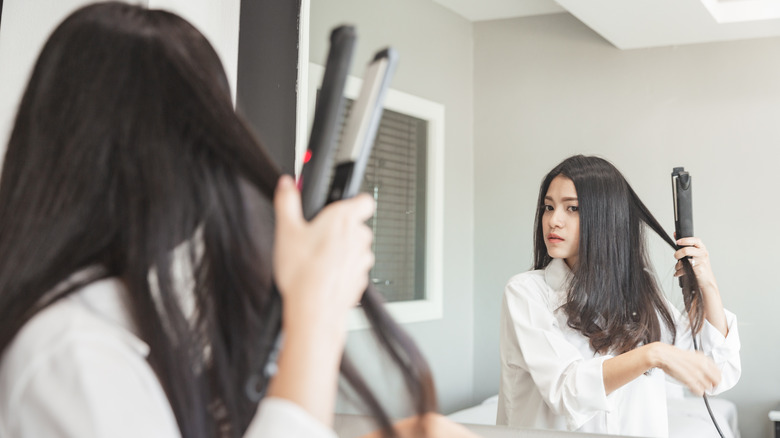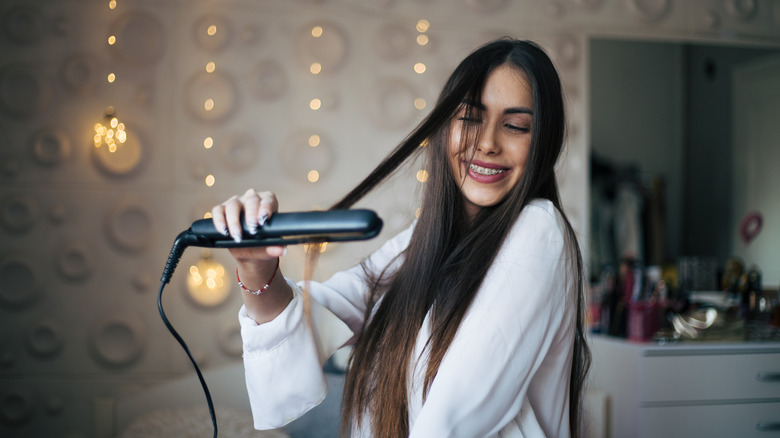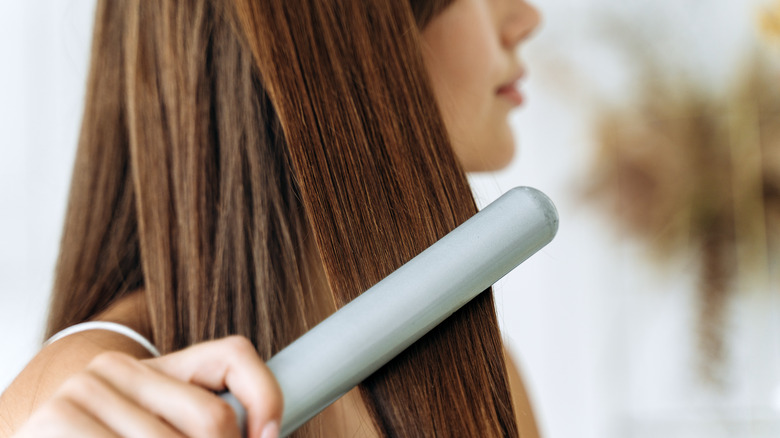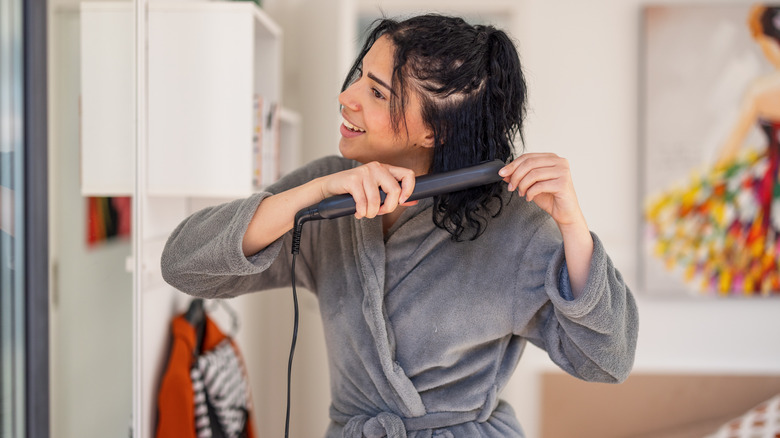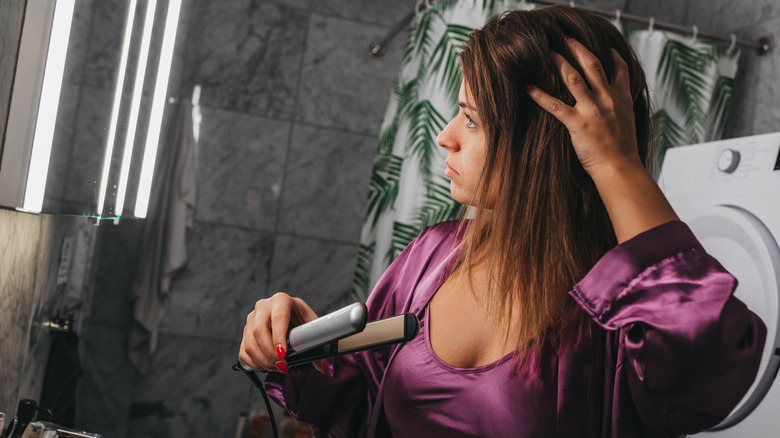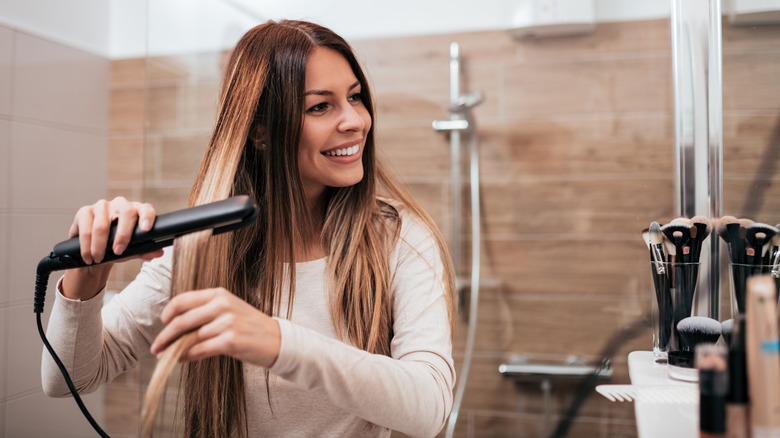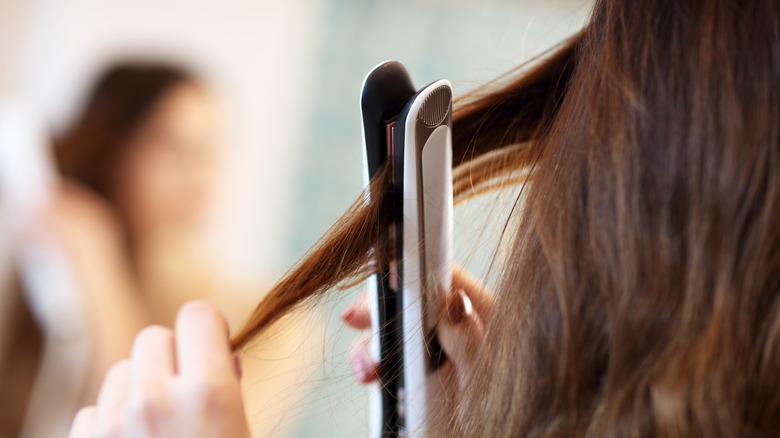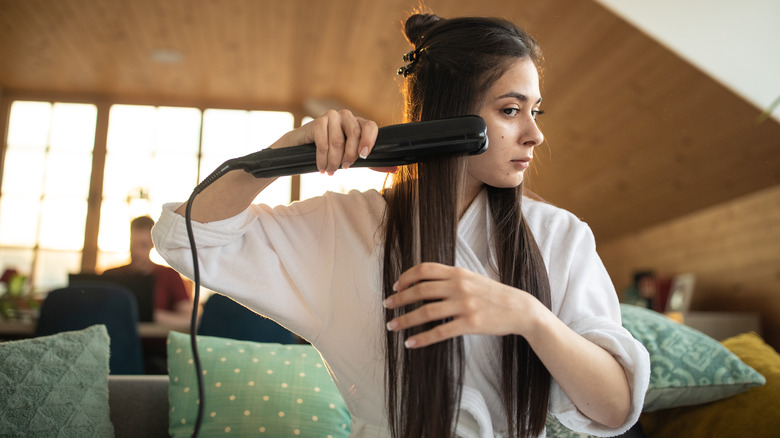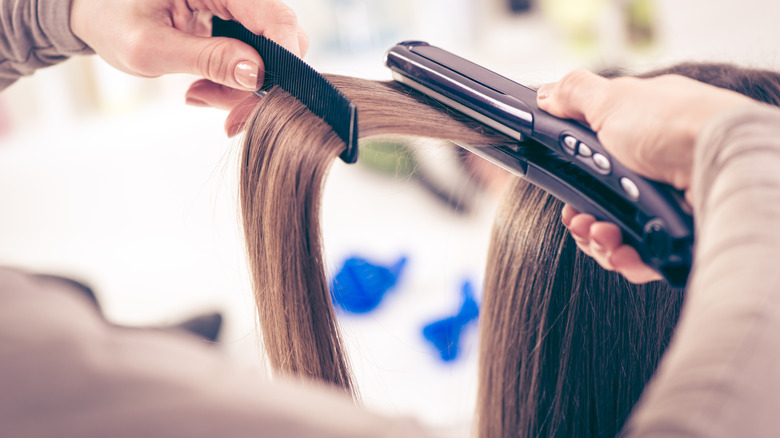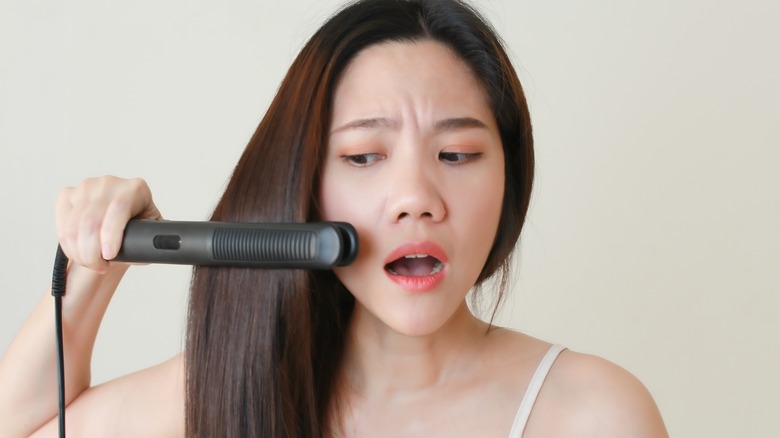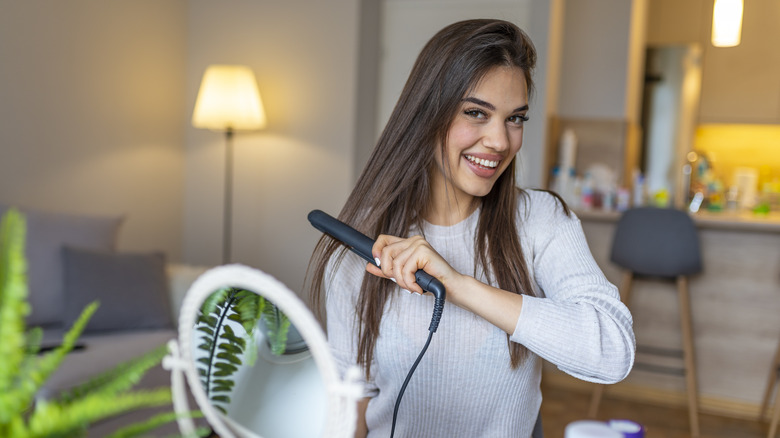13 Ways You're Straightening Your Hair All Wrong
Do you want to achieve sleek, runway-worthy locks without any hair-raising misfortunes? Have you ever found yourself battling frizz, split ends, or worse, the dreaded burnt hair smell after a hair straightening session? Fear not, dear hair enthusiasts, for we are here to rescue you from those common straightening faux pas and pave the way to fabulous, flawlessly straight hair!
Think you've mastered the art of hair straightening? Think again! We will unravel the truth behind the myths and equip you with the knowledge to get the best out of your hair straightening routine. Want to add more volume to your crown? We've got you covered! Are you struggling with pesky straightener dents? They're easily solvable! Whether you're a hair-straightening newbie or a seasoned enthusiast, avoiding these straightening mistakes will take your styling game to a new level. It's time to make every hair-straightening day a good hair day!
Heat protectant is optional for you
Heat protectant is the knight in shining armor for protecting your precious hair from damage caused by heat styling. It should be a crucial step in your hair routine every time you use heat. We understand that sometimes you may be in a rush or feeling a bit lazy, and adding one more step to your hair-straightening routine might seem like a hassle. However, using a heat protectant spray is not optional, as it creates a shield for your hair by forming a thin film around each strand.
"This film creates a barrier from the heat, letting the hair gently heat up instead of shocking the hair with a blast of heat," Chief Operating Officer and Head of Product Development at UNITE Hair Nikki Neubarth told Mane Addicts. If you've ever accidentally burned yourself with a hair straightener, you know how hot they can get. Now imagine applying that heat directly to your hair without any protection. In addition to shielding your hair from heat-induced damage, heat protectants can also add and lock in moisture and reduce frizz. Using them is a win-win in our opinion.
You use the wrong hair straightener for your hair type
When it comes to hair straighteners, choosing the right type for your hair is crucial for achieving the best results without causing unnecessary damage. Luckily, figuring out which one suits your needs is an easy task. If you have fine hair or hair that gets damaged all too quickly, opting for a hair straightener with ceramic plates is recommended, as they evenly distribute heat and give you plenty of control. Those with thick hair that makes the straightening process a lengthy endeavor should go for titanium plates, as they heat up quickly and maintain high temperatures.
If you have wavy, curly, or frizzy hair, a straightener with tourmaline plates is your best bet. Tourmaline plates are great at straightening even at lower temperatures, helping to keep moisture in your hair, which any curly-haired girlies know is important. Regarding the size of the plate, hair stylist Harry Josh recommends sticking to smaller ones. "Never go above an inch-and-a-half," the stylist told Teen Vogue. "You won't be able to reach the root properly." With the right tool, achieving shiny and healthy straight hair at home is easily achievable.
The heat setting is either too high or too low
Finding the right temperature for your hair can be challenging, as using either too low or too high of a setting can result in a bad hairdo. It is crucial to get the temperature right for a successful and safe hair straightening session. Let's break down which temperatures are best for which hair types.
The setting for fine and fragile hair should be between 250°F and 300°F. If you have normal hair that falls more in the neutral ground in terms of thickness and texture, you should heat your straightener up to 330°F to 350°F. Those with naturally wavy hair can handle up to 370°F, while anyone with coarse or textured hair will need the temperature to be between 370°F and 410°F. Lastly, if your hair is very thick and difficult to tame, you can go for a setting between 410°F and 450°F. Keep in mind that everyone's hair is different, so when in doubt, always go lower with the setting. The worst thing that can happen with a heat setting that's too low is that it might leave you feeling like you're barely making any progress.
You go over a piece multiple times
To achieve efficient and safe hair straightening, we know it's important to determine the appropriate heat settings and plate type for your hair. This will not only save you precious seconds but also help you avoid excessive damage from going over the same strand multiple times. Ideally, you should pass over each hair section only once. "One pass means that the plates are evenly heated and it will only take one pass to make the perfect curl or smooth out your texture," celebrity hairstylist Jill Buck shared with Makeup.com.
Repeated exposure to heat can harm your hair, even if using a lower heat setting. The repeated passing of hair between the straightener plates creates friction, which can rough up the cuticle, the protective outer layer of your hair strands, making them more prone to damage and frizz. To avoid these problems, ensure the heat settings are appropriate to allow for one pass on each strand.
You don't clean your hair straightener often enough
If you let your hair straightener become a hot mess, it may not achieve the same level of straightness as it once did. This is because styling products like heat protectants, serums, and hairsprays can accumulate on the plates of your hair straightener over time. This buildup reduces the tool's effectiveness and can even transfer onto your hair during styling, which is definitely not desirable.
Cleaning your hair straightener is an easy process that does not require any magic potions. Celebrity hairstylist Michael Dueñas suggested to Insider that you should always start by unplugging the hair straightener and letting it cool down completely. Then, take a microfiber cloth or paper towel dipped into rubbing alcohol and gently wipe the plates to remove any residue. It is best to avoid using any harsh chemicals that could damage the plates. Once the hair straightener is fully dry, it is ready to be used again. Regular cleaning not only ensures optimal performance but also extends the life of your hair straightener. So, if you use your hair straightener often, consider adding this to your weekly or monthly cleaning routine.
You straighten your hair while it's damp
Ah, straightening damp hair — a mistake that can lead to a whole lot of hair havoc! As professional hairstylist Dawna Jarvis explained to Byrdie, "Hair is weakest when it's wet, and high heat from a straightener can turn the water in the hair into steam, leading to hair breakage and damage to the cuticle. This can result in frizz, split ends, and sometimes even a burnt smell."
To avoid this faux pas, always ensure that your hair is completely dry before using a hair straightener on it. If you find yourself in a pinch and your hair is still a bit damp, you can still save the day with a good ol' blow dryer. Once your hair is nice and dry, you can safely straighten it without the risk of steam-induced damage. Patience and planning are key! If you're short on time, consider an updo as a healthier solution for your hair.
You don't work in sections
No matter how much of a rush you're in, skipping sectioning off your hair will result in a poorly styled job, so you might as well skip straightening altogether. "You shouldn't be randomly grabbing fistfuls of hair," hairstylist Sarah Potempa explained to Teen Vogue. "The iron won't be able to get to pieces that are too thick, and you don't want to unnecessarily reapply heat."
Dividing your hair into manageable sections allows the straightener to reach every strand effectively. We recommend separating your hair into at least three sections: top, middle, and bottom, securing each one with a clip or tie. Begin with the bottom section, taking a smaller subsection and gliding the straightener over it. Once you finish straightening one section, unclip the next one and continue the same method. This simple approach ensures your entire head of hair is straightened and not just some of the pieces in the front.
You pull the straightener down instead of up
For some people, especially those with fine hair, straightening can result in a significant loss of hair volume, leaving them with a flat, almost greasy-looking appearance. However, this can be easily prevented with the right hair straightening technique. Instead of dragging the straightener down your hair, try going up and away! Get as up close and personal with your roots as you can when flat ironing, and gently pull the hair up as you glide the straightener. This should imbue your hair with magical lift, complete with volume at the crown that mimics a freshly blown-out hairdo.
To master this technique, divide your hair into manageable sections and work your way through each one. This seemingly small change will make a world of difference in your hair's overall appearance. While we recommend using this approach on all strands, if you're in a pinch, doing it only at the crown of your head will also suffice.
Your straightener is of poor quality
Finding a good straightener for every budget is possible. However, if you're a hair straightening enthusiast and style your locks at least 2-3 times per week, investing in a professional tool can truly be a game-changer. While budget-friendly options can get the job done, a high-quality straightener is in a league of its own. The benefits it brings to your hair and styling experience are undeniably worth the higher upfront cost if you use it regularly.
Professional hair straightening tools often come with advanced features such as precise temperature control, quick heat-up times, and even heat distribution. They are designed to minimize damage while delivering optimal results, leaving your hair sleek, smooth, and ultra-soft. "Look for the recovery time," hairstylist Potempa explained to Teen Vogue. "A lot of cheap flatirons take up to 90 seconds to recover the temperature you set, so you're actually losing heat as you go along. That also means heat won't be evenly distributed between the two plates."
When choosing a professional straightener, look for reputable brands that hairstylists trust. And if you're wondering whether you should go for a Dyson Corrale Hair Straightener or a GHD Cordless Unplugged Styler, we have a thing or two to say about each.
You apply too much pressure
Hair straightening is definitely a delicate dance between precision and finesse! Applying too much pressure is a common mistake that can not only leave unsightly lines and marks at the roots but can also lead to friction and hair breakage. A hair straightening session can quickly turn into a hair-pulling experience when a single strand decides to rebel and gets entangled in the straightener. It's a situation we've all encountered — and it's definitely not for the faint of heart.
To avoid this and achieve flawless results, remember that the key to successful hair straightening lies in a gentle touch. Instead of pressing down forcefully, use just enough pressure to guide the straightener smoothly through your hair. Your hair will thank you for treating it with care, leaving you with beautifully straightened locks that are smooth, sleek, and free from any visible dents or damage.
You don't comb constantly
The Comb Chase Method is a hair straightening technique that utilizes a comb (preferably of the fine-tooth variety) to get rid of any knots while flat ironing. This method is a game-changer for achieving that ultra-sleek, smooth look without having to go over your hair multiple times.
Here's how it works: First, take a small section of your already pre-sectioned hair. Then, take a heat-resistant comb. Position the teeth of the comb close to your roots, leaving some space to place the flat iron behind it. Now comes the chase! First, move the comb, gently gliding it down the section, and immediately follow up with your hair straightener, applying gentle pressure as you glide behind. The brilliance of this technique lies in its seamless blend of combing and straightening, leaving no room for error. Once you've completed all of the sections, your hair will be perfectly combed out and straightened.
You keep going even after you smell burnt hair
The unmistakable scent of burnt hair is not only unpleasant but also a clear warning sign that something is going wrong during your hair straightening session. If you find yourself continuing despite the smell, we're begging you to hit the pause button and address the issue immediately. "When you wrap a chunk of hair around very hot irons and either hold the hair there for a long time or keep running the hot tool over and over the same area, you're going to burn the outer sections of the hair," trichologist Penny James told Makeup.com. "You've burned the cuticle and molecule element of the hair shaft, which is why you still smell the on-fire stench even when your hair is clean."
The smell of burnt hair indicates that the heat from the straightener is too high or that you're holding it in one spot for too long. Both scenarios can result in hair falling off — we've all seen those countless viral videos. In the best-case scenario, overexposure to high heat will lead to dryness or split ends. In either case, you will likely need to chop off the affected portion of your hair. If you ever notice the smell of burnt hair, stop using heat on it immediately, let it cool down, and try to save the situation by using a deep conditioner to give your hair some much-needed TLC.
You straighten your hair every day
Truth be told, there is no one-size-fits-all rule when it comes to the ideal amount of hair straightening. Different hairstylists may offer varying opinions, but the key is to consider your hair type and texture. If you find yourself straightening your hair every day, it's time to take a step back and assess your hair's condition. Those with dry or frizzy hair should be cautious, as excessive straightening can lead to moisture loss and further exacerbate frizz. Similarly, if you have color-treated or damaged hair, subjecting it to frequent heat can worsen its condition.
For healthier hair, give your locks some breathing space. Limit your straightening sessions to no more than two to three times on a weekly basis. This will allow your hair to recover, retain its natural moisture, and minimize the risk of heat damage. At the end of the day, even the most luxurious and professional hair straightener can cause your locks to dry out. Assess your hair's individual needs and make a mindful decision. If your hair can handle daily styling without adverse effects, go ahead and rock that sleek look. However, if your hair craves some downtime, give it the rest it deserves.
